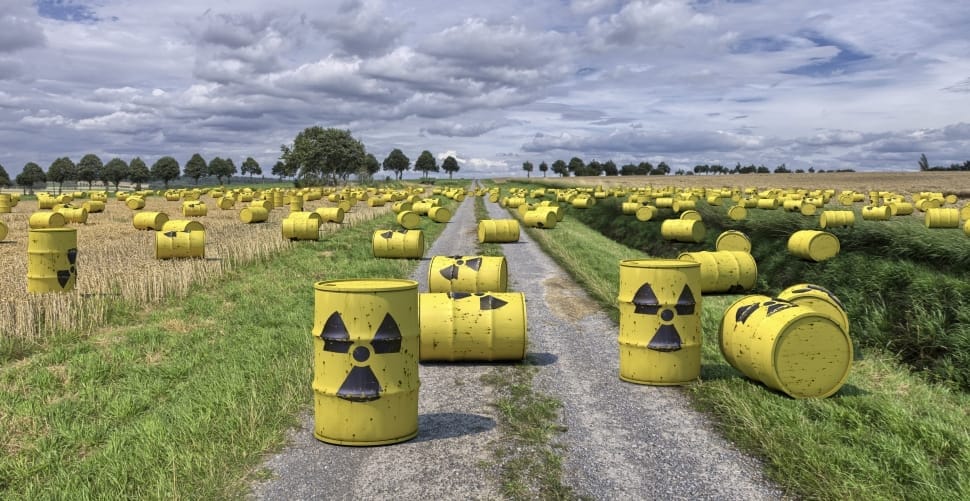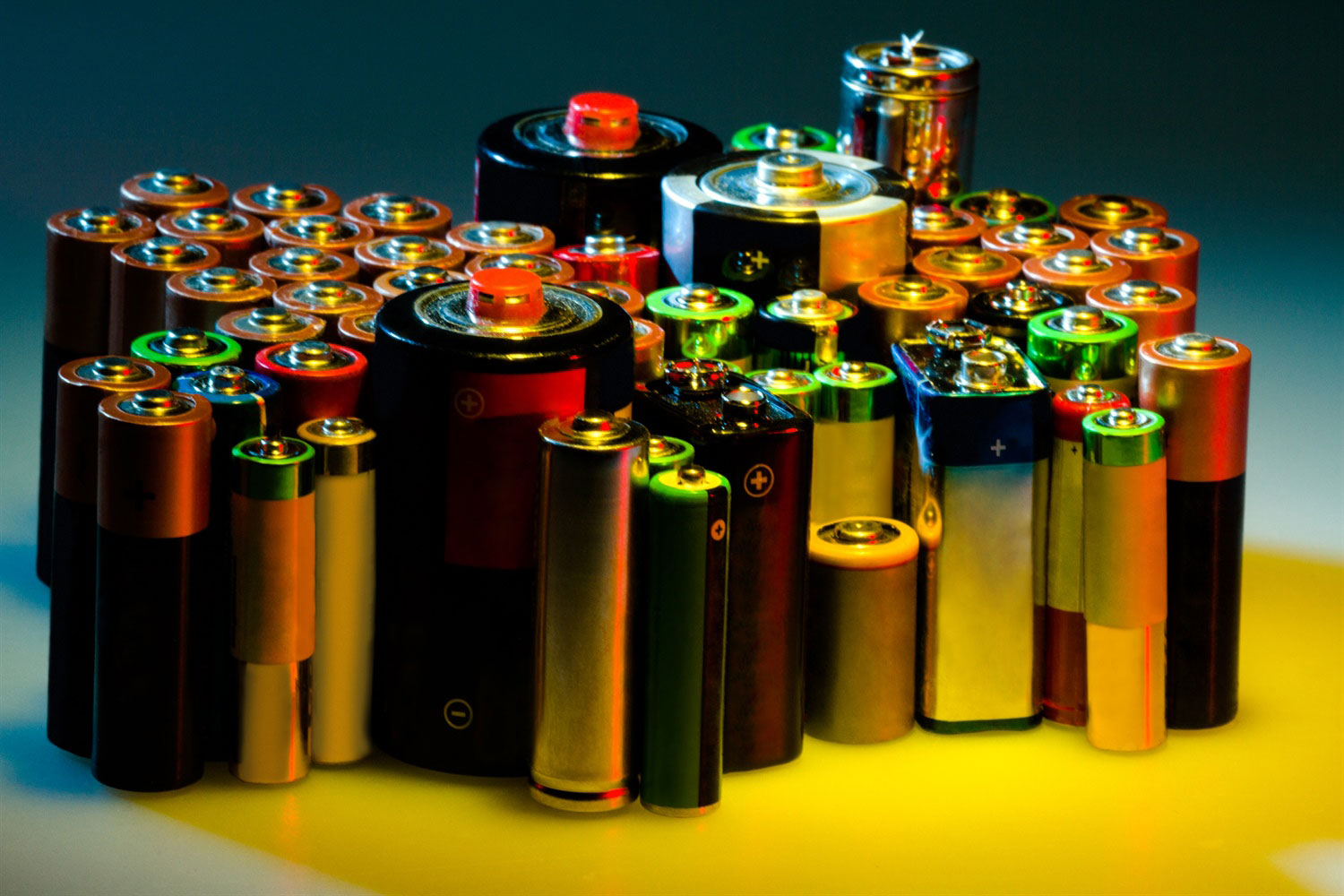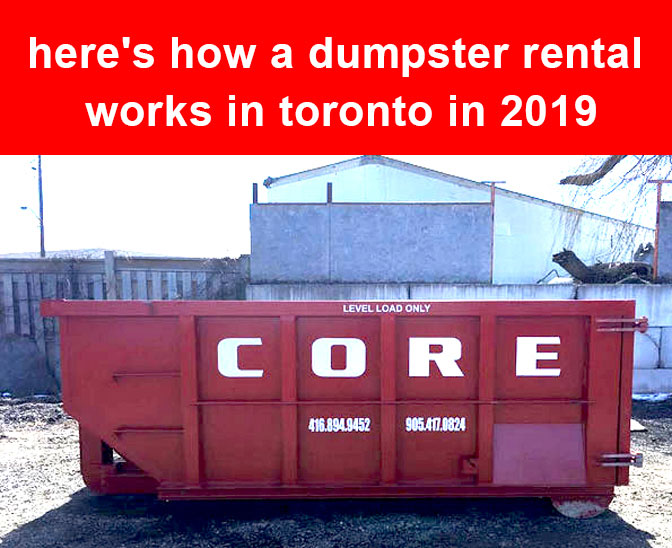Blog
Tesla is Developing a new Battery Recycling System and it Could Change a lot

Batteries are notoriously very difficult to recycle, containing chemicals which can sometimes be difficulty to extract. Tesla may have a solution. The company is introducing a new battery recycling system which is said to maximize the recovery of critical battery minerals, such as lithium and cobalt, in addition to the metals used in the battery cell itself which could include copper, aluminum, and steel.
Call this a proactive move by a company who is increasing production in electric cars. Tesla’s electric car sales are expected to accelerate in a big way within the coming decade and each of these cars will come with their own battery. No battery has an infinite life and so the current battery load for recycling, already problematic, is only going to increase and substantially so. Tesla’s not the only company to be chasing after a battery recycling system however they are unquestionably one of the best publicized.
Read more: Tesla is Developing a new Battery Recycling System and it Could Change a lot
How are Toxic Chemicals Finding their way into Recycled Plastics in Canada

When recycling processes are not developed with safety of the end-product prioritized, you receive what we have here. A recent report suggests some children toys made from recycled plastics contain toxic chemicals. This is obviously problematic as children are used to putting toys in their mouths and exposure to toxic chemicals would prove to be extremely dangerous at such a young age.
Flame retardant contamination seems to be the primary culprit, evident in plastic cars, pocket calculators, hair accessories, and similar plastic products. Although these products are not a fire hazard, they still contain some of the most toxic substances as defined under the Stockholm Convention. At a time when the world should be reducing the use of these chemicals, they’re everywhere in our toys. Sadly, consumers think they’re doing a good thing by purchasing a product made from recycled materials only to find out they are exposing their child to something dangerous.
Read more: How are Toxic Chemicals Finding their way into Recycled Plastics in Canada
What Does the US Do with its Nuclear Waste and Exploring the Secrets of the WIPP

The United States has a long history of nuclear research and development. The nuclear bomb was first produced by the well-known Manhattan project, a joint effort led by the United States with support from the United Kingdom and Canada. The development of nuclear weapons has continued and accelerated since then. The United States undertakes a massive amount of research into nuclear weapons. This research often involves contact with plutonium and other radioactive elements. This produces a significant amount of dangerous radioactive waste.
Read more: What Does the US Do with its Nuclear Waste and Exploring the Secrets of the WIPP
What are Zero Waste Grocery Stores and how they can help your Household Waste Come Down

Consumer waste is one of the largest contributors to landfills today. The average trip to the grocery store has you taking home as much, if not more, garbage as you are food. So many products contain multiple levels of packaging. It’s all too common to have food items come in individual packaging inside of a box that you take home in a plastic bag. This trash can really stack up quickly. Much of this waste can be averted by bringing your own bags to the grocery store. If you want to take things a bit further you can try frequenting a zero waste grocery store.
Zero waste grocery stores combine the obvious waste reductions of a bulk food store with further reduction coordinated with suppliers. Items are without packaging whenever possible. Most products are offered in bulk, reducing the packaging required compared to the amount of food you’re getting. Sometimes, items do require some sort of packaging. In these cases, care is taken to use recycled bale, compostable, or reusable materials. This can help cut down on single-serve plastic packaging that would surely have gone to the landfill.
Read more: What are Zero Waste Grocery Stores and how they can help your Household Waste Come Down
How Do you Clean Up after a Home Renovation

Home renovation can be a lot of work. At first it’s very exciting, the remodeling of your home always is. It’s easy to think of the renovation itself as the hard part. If you find yourself celebrating as soon as you’ve finished, you might be celebrating a bit too early. The clean-up involved in renovations can be a substantial part of the total work load. This can be very repetitive and arduous work. While it’s an absolutely necessary part of the renovating process, the cleanup can seem much less rewarding than the renovations themselves. Here are some tips to help out.
Outsource It
The quickest and easiest way to get anything done is typically to hire a professional to do it. Home renovation cleanup is no exception to this rule. Wherever you are, there are surely countless junk removal companies nearby. The large number of different companies typically keeps prices at a reasonable rate through competition. These professionals are also sure to make quicker work of the clean-up than you would on your own. If you’re more pressed for time than you are for money, there’s no question that a junk removal company is the right choice.
Why does 30 Percent of Toronto Recycling Materials still end up Going to a Landfill

Toronto introduced its blue-box recycling program over 30 years ago. As the city’s population slowly has adapted to using the blue box correctly, Toronto’s recycling rates remain not as high as hoped. Why that is is up for debate.
Most residents have at least one misunderstanding regarding a recycling material, unfortunately. For example, just because an item has the recycling symbol does not mean it is recyclable. Alternatively, it is possible for a recycling material to be contaminated which would prevent it getting recycled. Some contamination can also spread to other parts of the blue box, thereby reducing the contents of the entire bin to non-recyclable.
Read more: Why does 30 Percent of Toronto Recycling Materials still end up Going to a Landfill
These 3 Companies are Using Revolutionary Techniques to Recycling Styrofoam

Styrofoam’s a non-recyclable product and has always been a troublesome material for the recycling industry as there’s simply nothing to do with it – until now. Thanks to the efforts of the companies Pyrowave, Polystyvert, and GreenMantra, non-traditional chemical-based technologies are making it possible to recycle Styrofoam for the first time.
Styrofoam’s a version of polystyrene and is used in takeout containers, in electronics packaging, coolers, and a wide variety of different products. Styrofoam’s got a bad reputation in waste management, with less than 4 percent of polystyrene containers and packaging like this recycled on average. Even once they hit a landfill, they take decades and possibly centuries to break down. New York City even banned the use of Styrofoam in takeout containers in 2013.
Read more: These 3 Companies are Using Revolutionary Techniques to Recycling Styrofoam
Global e-Waste is Continuing to Climb as Canada and the US Still Haven’t Called Crisis

There are plenty of recycling crises out there, such as plastics, which receive a lot of attention. Electronic waste, such as that from our smartphones and computers, doesn’t receive nearly the press it should. Perhaps it’s because in Canada and the United States, we ship so much of our electronic waste off to other countries like India and the developing world where they are left to gather indefinitely – out of sight, out of mind.
There’s no disputing e-waste is a problem. More than plastic, glass, and metal, e-waste is the fastest growing category of waste in the world. In the past decade, e-waste has doubled worldwide to over 49 million tonnes produced annually. By 2021, e-waste is predicted to grow to 57 million tonnes and that’s going to presumably continue long into the future.
Read more: Global e-Waste is Continuing to Climb as Canada and the US Still Haven’t Called Crisis
Why Recycling and Landfill Diversion are Priority for Toronto Demolition Companies

In demolition, you might think the primary objective is to knock everything down by any means necessary and get rid of it all. Fifty years ago, that might have been true. These days, landfill diversion is something a lot of demolition companies are concerned with.
In some cases, a demolition company might be a mandated diversion rate to hit and in other cases, it might just be a preference to ensure they’re doing the right thing by minimizing the waste you create. Nevertheless, the last thing you want to do is allow recyclables to be buried in the rubble and transported to a landfill.
As a Toronto demolition company, we aim to recycle anywhere from 50 to 90 percent on any given job site. There are many reasons why maintaining the highest possible landfill diversion rate is important.
Limiting what is sent out to landfills.
The whole reason behind prioritizing recycling in demolition is that it keeps materials out of our landfills. That’s valuable real estate which should only be used for waste that absolutely cannot be repurposed in some way. Landfills in Canada are filling up quickly. The investment in sorting recyclables on a demolition site can produce positive environmental benefits.
Read more: Why Recycling and Landfill Diversion are Priority for Toronto Demolition Companies
Why has the United States started to Burn Recyclables

According to various reports published in the American media in early 2019, it appears the United States has resorted to burning their recycling. Although it’s believed to be temporary, it’s unfortunate that this appears to be what is happening currently at dozens of recycling plants all over the country.
Americans thinking they are doing the right thing by recycling are going through the effort of separating their garbage only to have facilities betray that trust. It’s not done maliciously, sure, however it’s still a dynamic that needs to be acknowledged. The United States has always sent the majority of its recycling overseas, instead of processing it and re-manufacturing these materials domestically.
Read more: Why has the United States started to Burn Recyclables
Top 7 Toronto Recycling Needs in 2019 in Need of more Support and Services

Toronto has a wide variety of recycling needs, ranging from residential to commercial and industrial. Here are the top 7 recycling opportunities in the GTA we continue to come across, oftentimes requiring more support and services than what local infrastructure provides.
Retailers and offices.
Small businesses, corporate offices, and retailers create sizeable amounts of waste every day. Convenient, secure, and economically viable recycling solutions are integral to ensuring no recyclables end up accidentally or purposefully in the trash.
Restaurants and hospitality.
Toronto has no shortage of restaurants, hotels, and hospitality-based businesses. Their recycling programs oftentimes focus on collecting food waste and compostable materials. A lot of recycling from restaurants also come from organics, paper and cardboard, newspaper and magazines, bottles and cans, batteries and lights, and electronics.
Read more: Top 7 Toronto Recycling Needs in 2019 in Need of more Support and Services
Tips and Tricks on How to Protect your Driveway with a Dumpster Bin Rental

Dumpster bin rentals put the focus on collecting waste. What some homeowners don’t often consider is the possible damage that can happen to your driveway when putting down the dumpster or, over time, as weight is put down and your dumpster gets heavier. Protecting your driveway has got to be a priority, whether it’s for a home renovation or junk removal.
Driveway damage happens, on occasion. It’s natural for some driveways to crack under the weight of the dumpster, in particular if they already have a visible crack in them. There are precautions you can take that will greatly minimize the risk of damage to your property. These methods are used by dumpster rental companies every day to prevent damage and ensure properties are left looking just like they were before. Here are some of the techniques we and others have used.
Read more: Tips and Tricks on How to Protect your Driveway with a Dumpster Bin Rental
Should Canada follow China’s Lead in Launching an AI-based Waste Management System

Artificial intelligence is creating opportunities in many different industries and in waste management, it’s no different. Although we like to think of North America being considerably more advanced than China on matters of waste management – and in many ways, we are – China’s outdoing us in its application of AI-powered waste management systems.
Across 33 Chinese cities, the government has rolled out more than 10,000 AI-powered waste sorting bins. If successful in application, this could have a significant impact on the cleanliness of China and the waste management standards associated with the East Asian nation. As evidenced in its decision to stop accepting untreated waste from nations like Canada and the United States, China’s on a kick to make itself a greener place. Things like garbage classification and recycling are either non-existent or way underutilized in parts of China. Technology has the opportunity to change that.
Read more: Should Canada follow China’s Lead in Launching an AI-based Waste Management System
How to Reduce your Garbage, Improve your Recycling, and Begin Composting from Home

As we create waste, especially in a family setting, it can be difficult trying to cut that down. If you’re concerned about the impact your garbage is having on the environment, there are ways you can potentially minimize your output.
Reducing waste.
Reducing waste may not seem possible however small changes can affect the environment in some big ways. For example, using cloth bags instead of plastic bags when possible can help minimize waste. Purchasing food items that have less packaging is another smart move. Not drinking bottled drinks can help eliminate the plastic waste you’re generating. See if there’s a way to reduce the amount of paper used on things like bills, utilities, and computer printing. Lastly, consider making some household cleaners instead of buying commercial products.
Read more: How to Reduce your Garbage, Improve your Recycling, and Begin Composting from Home
Winnipeg is Collecting Mattresses and Boxsprings for Recycling, Should Toronto?

The City of Winnipeg has partnered with the Mother Earth Recycling organization to collect mattresses and boxsprings throughout the next year leading into January, 2020. It is expected more than 8,000 mattresses and boxsprings will be collected, keeping these from Winnipeg landfills. Comparatively, assuming Toronto were to implement a similar program, we could potentially save a lot of landfill space simply by targeting mattresses and boxsprings.
Living in Toronto, we all have been driving, riding the TTC, or walking by, and seen mattresses or boxsprings on the sidewalk. These are breeding ground for bed bugs and pests. They sit there, collect rain, and don’t really contribute to the ‘beautiful city’ perception Toronto wants to give. Not to mention, for property managers, discarded mattresses are troublesome to deal with. Winnipeg’s 1-year commitment to mattress and boxspring collection is a pilot project with a designated budget of $193,000.
Read more: Winnipeg is Collecting Mattresses and Boxsprings for Recycling, Should Toronto?
Why You Do Not Put Hazardous Waste in your Dumpster Rental

When you rent a dumpster or bin, hazardous waste is one of the few materials not accepted. Home dumpster rentals, construction dumpster rentals, and work dumpster rentals are all regulated by local laws. Any biomedical waste, hazardous waste, and/or any waste known as toxic or harmful to human beings upon exposure is not accepted.
Dumpster rentals are not used in the medical community for the aforementioned reasons. Biomedical waste includes any waste from human beings or animal care facilities, waste from medical or veterinary educational institutions, healthcare education centers, clinical testing and research laboratories, and facilities producing or testing vaccines. For these categories of waste, there are specific procedures and policies applying to their disposal. As a dumpster rental company, that’s not something we take on.
Read more: Why You Do Not Put Hazardous Waste in your Dumpster Rental
By 2050, There Could be more Plastic than Fish in our Oceans

Unless you’ve been living under a rock for the last 30 years, you know our oceans are in trouble. Everywhere from Canada to Australia, we are seeing changes in our environment related to ocean pollution. Canada’s endangered species living on its coasts are facing extinction, noise created from ships are impacting the killer whale population in fatal ways, and, above all else, plastic’s becoming ever-more present in small lakes and oceans across the world.
It’s been widely publicized that by 2050, we expect to see more plastic than fish in our oceans. Conservation research today shows us this is a growing problem with no definitive solution in sight. Unfortunately, it will be a long time before human beings have to pay for what our species is doing to the world’s oceans. Instead, it’s going to be environments like coastal habitants being destroyed. Killer whales and belugas are likely to run extinct. Hundreds of aquatic species who accidentally consume micro-plastics are also at risk of extinction. This is not even beginning to address climate change which is heating up our oceans and which is a direct threat to biodiversity.
Read more: By 2050, There Could be more Plastic than Fish in our Oceans
How Canada’s Northern Territories are Handling Waste Management and Recycling

The Northwest Territories, Nunavut, and Yukon are managing certain aspects of waste arguably better than major cities however they still have a long way to come. In some respects, there’s great opportunity in Canada’s north to prove the concept of a ‘circular economy’ achievable.
A ‘circular economy’ is a waste management strategy wherein 100% waste diversion is attained and all waste is reused in some way. The ongoing challenge here is although Canadians divert more than nine million tonnes of recyclable waste from our landfills, there’s still struggle in consumers and businesses to adapt.
Collecting, sorting, cleaning, and repurposing waste is a system that should be evaluated. Canada’s northern territories are one place we might be able to look to for inspiration and potential.
Read more: How Canada’s Northern Territories are Handling Waste Management and Recycling
Despite Being Highly Recyclable, Glass Waste can Still lead to Pollution

Due to perceptions of glass being 100 percent recyclable, we sometimes forget glass can still pollute.
Worldwide, there’s no disputing waste is a problem. Populations have grown, consumption’s augmented, and production of waste is at an all-time high. Similar to other types of waste, glass poses an acute risk and is a danger not only to our environment but to human health as well.
Although we may see glass as a pure product, glass waste oftentimes has a lot of toxic additives thrown in with it. Some of the toxins that have been found in glass waste include arsenic, lead, cadmium, and more. As these end up in landfills, evidently, they can pollute a lot of what’s there.
Read more: Despite Being Highly Recyclable, Glass Waste can Still lead to Pollution
Can Lithium Ion Batteries be Recycled in Canada

Lithium ion batteries exists in electric vehicles, smartphone batteries, and in many consumer products. Global demand for lithium ion batteries has never been higher, with shortages experienced for electric vehicles and phone batteries.
Earlier this year, the US government announced it was launching a new lithium ion battery recycling program. It is the hope that lithium ion batteries can be recycled from smartphones, electric vehicles, and other sources to help fill the void in supply. As demand is high and supply remains strained, batteries continue to rise in price. To turn the tide, the government is overseeing efforts to gather metals crucial to battery production and in anticipation of a potential massive shortage, according to recent documents from the US Department of Energy.
It’s a New Era in Waste Management with Toronto’s first Zero Waste Market

Toronto now has its first zero-waste market on Dundas Street West. Seeking to reduce waste in Toronto, the zero waste market known as ‘Unboxed Market’ is looking to do its part by bringing products down to zero waste standard.
Unboxed Market is owned by Michelle Genttner and Luis Martin, and occupies the space of a former Portuguese grocery store on Dundas. Customers interested in shopping here are encouraged to bring their own storage containers. As a sort of general store, you’ll find everything here from eggs to shampoo. Bringing your own containers, a customer can buy the preferred quantities or volume they desire and pay accordingly.
If you’re buying produce, bring your own cloth bags. If you’re buying liquids, bring a jar. There’s no rules on the containers allowed so you can fill up just about anything. Furthermore, there’s no limitation on how little or how much you need to purchase which means if you need a cup of flour, you can buy an actual cup of flour and nothing more. It’s sort of like a bulk barn of sorts for everything you might need in the kitchen. As opposed to having to pay for packaging and additional quantity which you may or may not use, you can minimize costs and consumption all the while limiting your waste output.
Read more: It’s a New Era in Waste Management with Toronto’s first Zero Waste Market
Is Paper or Plastic more Green for Packaging and Buying Groceries?

Practising sustainable practices and consumption patterns is tough when there’s so much non-green product out there. Plastics and paper are both materials regularly used to package and distribute commercial products across our planet. Although some types of these materials are recyclable, others are non-recyclable.
If we are to build sustainable communities on Earth, we must prioritize green options over non-green. Done right, you can reduce your carbon footprint by making choices on products which do not use up as much of our natural resources and/or which contribute to the build-up of greenhouse gases. Thereby, we hope to answer the question this week on whether plastic or paper is more green for packaging and buying groceries.
Most stores use plastic or paper in packaging, including in the bags they give out groceries and product in. In all honesty though, there are issues with both materials. Plastic bags are made from petroleum-based polyethylene which, in manufacturing, produces harmful emissions. It also cannot be recycled. As it doesn’t degrade, plastic bags tend to hang around for a long, long time in our environment.
Read more: Is Paper or Plastic more Green for Packaging and Buying Groceries?
5 Questions to Ask your Demolition or Excavation Company

You may have a lot of questions if this is the first time you’re hiring a demolition and excavation company in Toronto. Any company you hire to oversee a demolition or excavation is going to have a massive job look after. There’s a lot of responsibility that comes with a project like this. Completing it within regulation and expectation is important. Be sure to put in a lot of thought and consideration into who you hire to get the job done. Here are five basic questions to get ask a demolition company prior to hiring.
Read more: 5 Questions to Ask your Demolition or Excavation Company
When it Comes to Hazardous Waste in Toronto, this is How we Dispose of It

When waste materials are considered ‘too dangerous’ to be handled by normal methods and processes, they are classified as hazardous waste. For these materials, special treatments or disposal methods are required.
By Ontario standards, there are many reasons why a waste material may be considered hazardous. It could be a poison which could cause illness or death when it comes into contact with people. The waste material might burn or explode easily. There may be potential chemical reactions that could destroy human tissue when contact is made. The waste material may also potentially carry diseases or be radioactive. Needless to say, the reasons for a material to be hazardous vary.
Read more: When it Comes to Hazardous Waste in Toronto, this is How we Dispose of It
Here’s How a Dumpster Rental Works in Toronto in 2019

Anyone in Toronto planning to move, who are constructing a new home or office, or who are renovating a building, renting a dumpster provides a place to put waste so you don’t need to worry about it. Cost-efficient and clean, if you’ve never rented a dumpster before, we thought we’d give you a quick rundown of how it’s done.
Choosing the size.
Size of the dumpster is going to be what determines your cost. If you get too small, you’re going to require more pick-ups and that will increase your costs. If you get a dumpster too large, it’s paying more for space you don’t need. Depending on the size of a dumpster, costs can be anywhere from a few hundred to close to $1,000. The weight and type of waste you plan to discard will also have to be taken into consideration.
Read more: Here’s How a Dumpster Rental Works in Toronto in 2019


